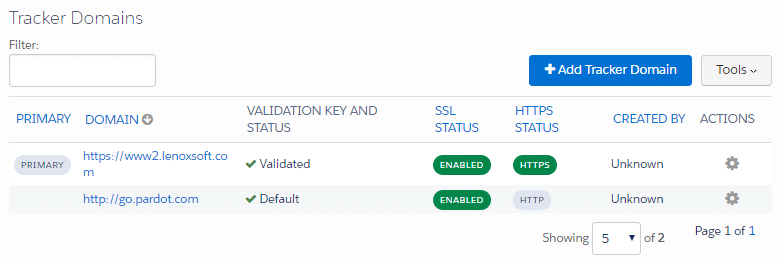Google recently announced a change which will impact how visitors see your landing pages hosted by Pardot. To prevent a possible penalty, you should enable the new SSL option from Pardot right away.
The Google-owned web browser Chrome has announced that starting in July 2018 they will begin marking all sites with HTTP in the address as “Not Secure.” This will be prominently visible in the browser’s address bar.
Chrome change may alarm some visitors
This will be a major update to how Chrome treats websites now.
Secure websites currently display a green padlock, with the word secure:

On non-secure websites, Chrome displays an innocuous ‘information’ symbol, leaving the web visitor to click for more information:

When the visitor clicks the icon, the expanded information appears:

The change coming in July 2018 will more clearly notify the visitors that they are on a non-secure website. The browser will prominently display the words “Not Secure” in front of the address:

This prominent display may make some visitors think twice before they submit a form, or even cause them to navigate away from the site without taking an action.
Chrome holds a large market share
How many people could be affected?
Chrome claims 58.4% of the market share for web browsers as of January 2018, according to a stat available from W3Counter.com.

Chrome accounts for 58.4% of the web browser market share. That is a large percent of your website visitors.
Use SSL for your Pardot Vanity URL Now
How does this change from Chrome affect your Pardot account?
Pardot now offers SSL for your vanity domain, and you should enable it right away. This whole set up should take around 15 minutes… and most of that is wating for the automated email telling you it is ready to use.
In Pardot, go to Admin > Domain Management.
Find the section lower on the page labeled Tracker Domains.

Your set up should be similar to the above, with your custom domain set as the Primary.
Note that the column labeled ‘SSL STATUS’ indicates the Pardot domain is enabled for SSL.
This means that only the Pardot domain can use ‘https’ in the URL. This is what we are going to change.
Click the gear icon off to the right of your custom domain. Choose ‘Enable SSL’ from the dropdown.

Then you will see a message that says it is in progress, and to check your email for the confirmation.

In a few minutes you will receive an email that says your SSL certificate is ready.

Just one more step.
Go back to your Domain Management page, and click the Gear icon again. Choose ‘Default HTTPS’ from the menu.

And you’re done!
You will see that you now have a green mark on your custom domain indicating that it will default to HTTPS.

Use HTTPS everywhere
Now you have set your Pardot domain so that it will default to use HTTPS everywhere in Pardot. You can start using your custom URL with https in front of it.
Even better, all the assets which already existed in Pardot can immediately begin using the https URL. No longer do you need a workaround to make Pardot assets secure – immediately you can change all your URLs to secure versions.
Need help configuring Pardot? Contact us for more information.


